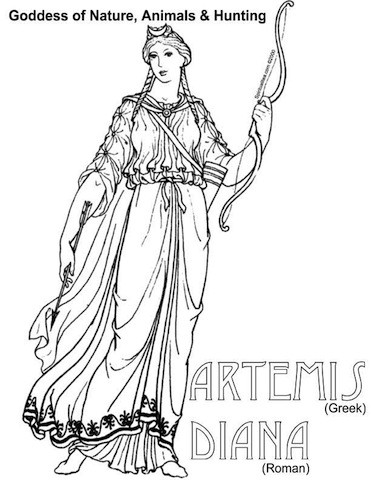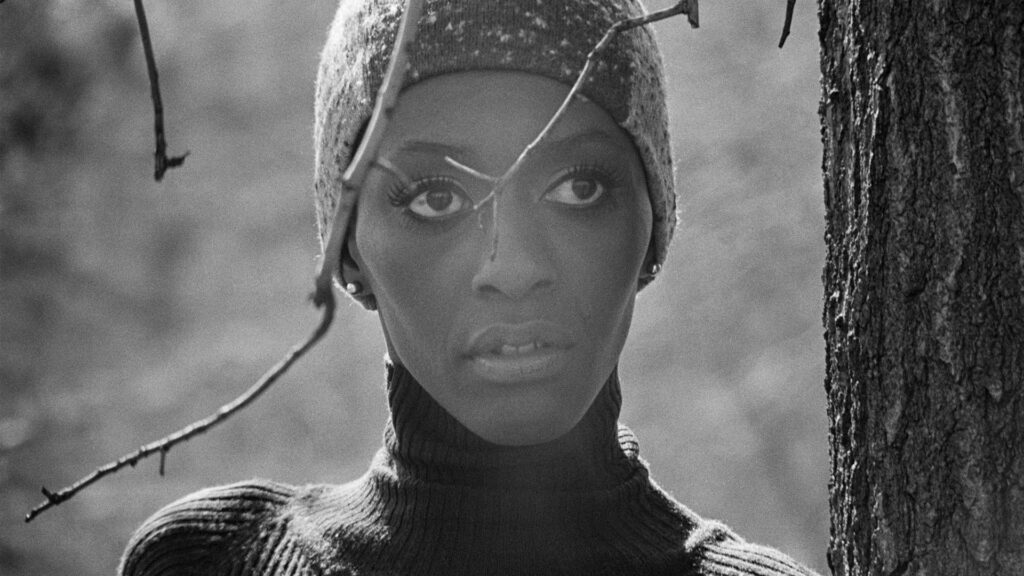What kind of “princess” is better off in the woods than at home? A princess who is more like the archetype of Artemis than of Aphrodite. In three recent films, we’ve seen a shift in the “princess” archetype in popular culture. In the past, the princess, a key character in fairy tales and myths, was depicted in films as a love interest, or even as a prize to be won, such as in Tangled, Enchanted, Shrek, and The Princess Bride, to name a few. The main focus of the princess’ sphere and her agency was in regards to love, relationships and marriage. But in The Hunger Games, Snow White and the Huntsman, and Brave, the heroine-protagonists are not interested in courtship; they have much more pressing problems to solve, and they all involve an exile or escape through a “enchanted” wilderness.
Katniss Everdeen (Jennifer Lawrence), in The Hunger Games, sacrifices her own safe position to replace her sister Primrose (Willow Shields) in The Hunger Games televised competition, and in doing so, she must represent District 12 — and fight to save her own life. Although not technically a “princess,” Katniss does represent her region and is “crowned” in a formal ceremony by the end of the film. Her prowess in the woods, especially as an archer, is quickly established in Act One. Her skills in the forest are featured throughout the film, and she owes her eventual success in the Panem contest in large part to her athletic talents which serve her well in the woods.
In Snow White and the Huntsman, Princess Snow White (Kristen Stewart) suffers the death of her mother. Her father, the king, finds a second wife: the malevolent, beauty-seeking succubus Ravenna. After being detained for years in a tower by Ravenna’s brother, the princess escapes into the Dark Forest, followed by the eventual mentorship of the Huntsman (Chris Hemsworth). While in the woods, the Huntsman teaches her a crucial defensive move to use in hand-to-hand combat. Snow White soon realizes that she must avenge her father’s death, and become Queen in order to save the land from Ravenna’s destruction. In Act Three, armored on horseback and leading an attack, we see that Snow White did indeed learn lessons in the forest, especially in her final climactic battle with Ravenna.
In Brave, Princess Merida (Kelly Macdonald), loves to ride, hike and scale sheer, tall cliffs by herself in tenth century Scotland. Her mother Elinor (Emma Thompson) wants her teenaged-daughter to wed, as is traditional. In the Highland Games, Merida bests all of her suitors as an archer; in effect, she wins her own hand in wedlock. When this feat does not end the competition for marriage, Merida revolts; she runs away into the nearby shadowy timberland. She comes across a witch in the woods, and acquires a spell from her to be used on her mother; all Merida knows is that the spell will change her mother somehow. When the Queen is transformed into a bear, Merida must undo this grave error, and spends the rest of the movie trying to do so.
Much as been written already about these three protagonists as “action” or “warrior” princesses. But these “princesses” share something much deeper than that: all three share a tie to the archetype of the goddess Artemis.
In Greek mythology, Artemis is known as the “nature girl” archetype; her name is Diana in the Roman pantheon. Artemis/Diana loves to roam the woods, mountains, or meadows — anywhere in the outdoors. The bear is one of her sacred symbols. She’s a killer archer as well; one of the most famous classical statues of this goddess shows her with her full quiver on her back. Artemis is a renowned huntress; she excels at it.
Katniss is introduced to us as an Artemisian presence early in The Hunger Games, when we see her hunting for food among trees before the tributes are even picked. For most of the film, the focus is on Katniss’ strengths as a fit survivalist, and she’s forced to face some technological woodland “trickery,” manipulated by the contest officials — thus making her woods “enchanted.” Snow White, in the Dark Forest sequences with the Huntsman and in the Act Three battle, becomes more Artemisian as the film progresses. Her mentor is a huntsman; she is training for the Hunt. Merida exhibits characteristics of Artemis from the start; her story also becomes about a mothering bear. The competition for Merida’s hand in the Highland Games is reminiscent of the story of Atalanta, thought by many scholars to be linked to the worship of Artemis. As an infant, Atalanta was raised as a bear in the woods. As an adult princess, Atalanta competed with any suitor in a race, and killed those who failed to best her. Since she was the fastest runner in the land, all the men who tried to marry her died — except for one.
Looking at this further from a mythic perspective, these film princesses are a move away from an “Aphrodite” love goddess archetype, previously valued in a royal maiden who is beautiful and winsome: a love trophy. These new protagonists embrace Artemis, the athletic huntress, instead.
The role of the princess in myth and fairy tales, traditionally, is related to her ability to heal and “reproduce” for the kingdom, either through marriage or action. Through their adventurous arcs, Katniss, Snow White, and Merida do “heal” their respective lands/regions. But they do so thanks to the time they spend in the wilderness, learning lessons to be found in the mysterious shadows there. They emerge from the “Dark Forest” victorious, as only Artemis can.
In mythology, we see stories about patterns of behavior that help us to understand what it means to be human. That all three of these hit films were released within a three-month period could be seen as an indication that Artemis, as an archetype, has emerged from the collective unconscious, poised for a fight with a sword or bow, held by a female hand. These films seem to signal a “call to action” for women to fight for identity issues, status, and rights. It is an interesting to note that at a time when we discuss the “War on Women” in the socio-political arena, iterations of Artemis are on the rise in films — and making money.
__________________________________________________________________
Laura Shamas, Ph.D., is a writer and mythologist, who works in theater, film, and pop culture analysis. Her new book, POP MYTHOLOGY, will be released in July 2012.







